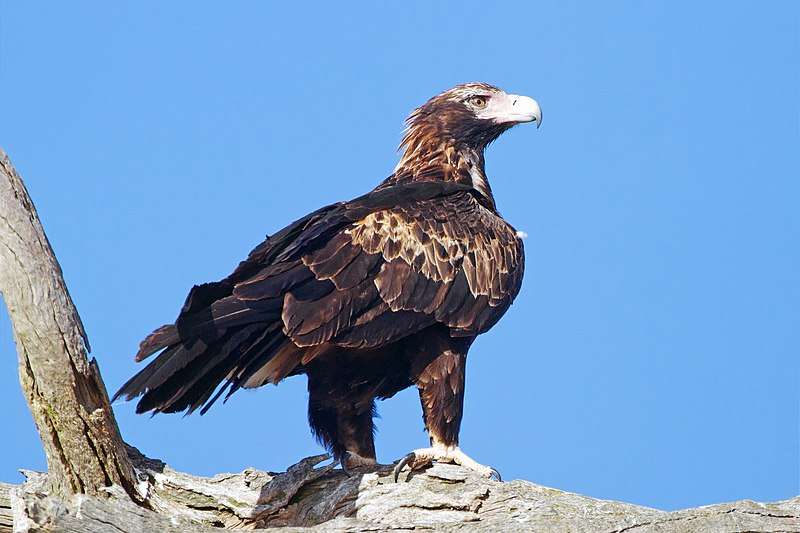
Description
Life span: Up to 20-24 years
This eagle is lanky and fairly huge. It is normally black, but due to individual differences and lighting, it can appear anything from tar to charcoal brown. The huge bill of wedge-tailed eagles contrasts with their small, flat head and long, almost vulturine neck. They can be identified by their pronounced carpals and loose, feathery clothing. The species occasionally perches prominently on dead trees, telegraph poles, rocks, or plain ground. When perched, this species’ long wings extend well down its long, wedge-shaped tail, and it can be recognised by its huge bill, elongated body, and prominent shoulders. They have a high percentage of bare facial skin, which is assumed to be a climate adaptation rather than a carrion-eating adaptation, given the golden eagle and Verreaux’s eagle, which do not consume carrion, have comparable facial feathering.
Native Region/Habitat
All of Australia, as well as Tasmania, Papua New Guinea, and Indonesia, is home to wedge-tailed eagles. Although they typically occur around plains away from the water along the coasts, they can live in open woodland, savanna, heathland, grasslands, semi-desert, desert edge, subalpine forests, montane grasslands, and mountain peaks. They can also live in dwarf conifer forests, monsoon forests, and some wetlands.

Behavior
These beautiful raptors spend much of the day perched in trees, on rocks, or on other exposed vantage places, such cliffs, from where they can see well into the distance. On rare occasions, they leave their perch and fly swiftly over their home range. During the stifling noon heat, they frequently soar high in the air while circling on thermal currents rising from the ground below.
Each couple has a home range that they patrol and promote through soaring and gliding flights at great altitudes. They can fling themselves at intruders to defend their territory. Wedge-tailed eagles can hunt alone, in couples, or in small groups. The majority of prey is taken by gliding assaults on the ground or (less frequently) in the air. Typically, wedge-tailed eagles are silent. They make a variety of whistles, yells, squeals, and even a rolling series during the breeding season.
As a pet/In captivity
Eagles are roving creatures. Only expert falconers are permitted to own eagles. Eagles do not want to be handled and will never be regarded as tamed creatures, even after eight years of training to become a master falconer. They need a lot of outside area, frequent flying, and exercise, and they have to be maintained according to stringent rules. The only way to learn and get qualified as a master falconer is to be able to keep eagles as pets, which is always against the law.
Table





